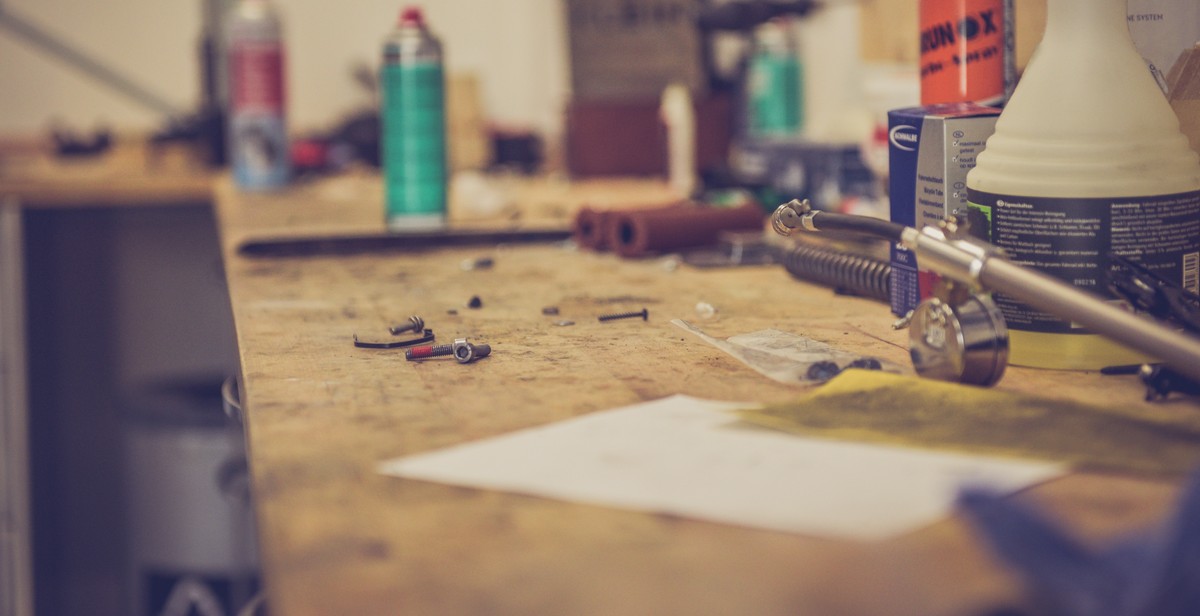The Art of Enameling: Techniques for Adding Color and Texture to Jewelry Pieces
Enameling is a centuries-old technique used to add color and texture to metal surfaces. It involves fusing powdered glass to a metal base through a high-temperature firing process. The result is a durable and long-lasting finish that can be used on a variety of jewelry pieces, from earrings and pendants to bracelets and rings.
The History of Enameling
The history of enameling can be traced back to ancient times, with evidence of enameling found in the artifacts of the Egyptians, Greeks, and Celts. It gained popularity during the Byzantine era, where it was used to decorate religious objects and jewelry. During the Renaissance, enameling experienced a resurgence in popularity, with artists using it to create intricate designs on jewelry and other decorative objects.
Why Enamel is Popular in Jewelry Making
Enameling is a popular technique in jewelry making because it allows for the creation of unique and colorful designs. Enamel can be applied in a variety of ways, including cloisonné, champlevé, and plique-à-jour, each with its own distinctive look. Additionally, enamel is a durable material that can withstand wear and tear, making it ideal for use in jewelry that will be worn frequently.
Whether you’re a professional jeweler or a hobbyist, enameling is a technique worth exploring for its versatility and beauty. With a little practice and patience, you can create stunning pieces that will be cherished for years to come.

Types of Enameling
Enameling is a technique of adding color and texture to jewelry pieces by fusing powdered glass to metal through high heat. There are different types of enameling techniques, and each has its unique characteristics that make it stand out. Here are the most popular types of enameling:
Cloisonné
Cloisonné is a technique where thin wires are used to create compartments on a metal surface. These compartments are then filled with enamel, fired, and polished to create a smooth surface. The wires remain visible on the surface, creating a beautiful outline for the design.
Champlevé
Champlevé is a technique where a metal surface is carved or etched to create recessed areas. These areas are then filled with enamel, fired, and polished to create a smooth surface. The raised metal areas create a beautiful contrast to the enamel, making the design stand out.
Plique-à-jour
Plique-à-jour is a technique where enamel is applied to a metal surface without a backing. This creates a stained-glass effect where the light can pass through the enamel, creating a beautiful and unique effect.
Basse-taille
Basse-taille is a technique where a metal surface is engraved or etched to create a pattern. The pattern is then filled with translucent enamel, creating a beautiful effect where the metal shines through the enamel.
Painted Enamel
Painted enamel is a technique where enamel is applied to a metal surface with a brush. This technique allows for more intricate designs and a wider range of colors. The enamel is then fired and polished to create a smooth surface.
- Cloisonné: uses thin wires to create compartments on a metal surface.
- Champlevé: carves or etches a metal surface to create recessed areas.
- Plique-à-jour: applies enamel to a metal surface without a backing.
- Basse-taille: engraves or etches a metal surface to create a pattern.
- Painted Enamel: applies enamel to a metal surface with a brush.
| Enameling Technique | Characteristics |
|---|---|
| Cloisonné | Uses thin wires to create compartments on a metal surface. |
| Champlevé | Carves or etches a metal surface to create recessed areas. |
| Plique-à-jour | Applies enamel to a metal surface without a backing. |
| Basse-taille | Engraves or etches a metal surface to create a pattern. |
| Painted Enamel | Applies enamel to a metal surface with a brush. |

Techniques for Enameling
Enameling is a decorative technique that involves fusing powdered glass to metal surfaces at high temperatures. This process creates a smooth, glossy, and durable finish that can add color and texture to jewelry pieces. Here are the techniques involved in enameling:
Preparation of Metal Surface
The first step in enameling is to prepare the metal surface. The metal needs to be clean, free of any dirt, dust, or oils. The surface should be textured using sandpaper or a file to create a rough surface for the enamel to adhere to. After the surface has been textured, it is important to clean it thoroughly using a degreaser such as denatured alcohol or acetone.
Application of Enamel
Once the metal surface is prepared, the enamel can be applied. There are several ways to apply enamel, including:
- Wet Packing: This involves mixing the enamel powder with water to create a paste that is applied to the metal surface.
- Dry Powder: This involves sprinkling the enamel powder onto the metal surface.
- Cloisonné: This involves creating compartments or cells on the metal surface using wires or thin strips of metal. The enamel is then applied to each compartment.
Firing Process
After the enamel has been applied, the piece needs to be fired in a kiln at temperatures ranging from 1200°F to 1600°F. The firing process melts the enamel powder and fuses it to the metal surface. The firing time and temperature depend on the type of enamel and the thickness of the layer.
Finishing Touches
After the piece has been fired, it is important to cool it slowly to prevent cracking or crazing. Once the piece has cooled, any excess enamel can be removed using a diamond file or sandpaper. The piece can then be polished to achieve a smooth and shiny finish.
| Step | Technique |
|---|---|
| 1 | Preparation of Metal Surface |
| 2 | Application of Enamel |
| 3 | Firing Process |
| 4 | Finishing Touches |

Tools and Materials for Enameling
Enameling is a delicate and intricate art that requires specialized tools and materials to achieve the desired results. Here are some of the essential items that every enameler should have in their toolkit:
Enamels
The first and most important material for enameling is, of course, the enamel itself. Enamel is a powdered glass that comes in a wide range of colors and textures. It is important to choose the right enamel for your project based on the type of metal you are working with and the effect you want to achieve.
Some of the most popular types of enamel include:
- Opaque enamel
- Translucent enamel
- Transparent enamel
- Cloisonné enamel
- Champlevé enamel
Metal Surfaces
The type of metal surface you are enameling on can also affect the final outcome of your piece. Some of the most commonly used metals in enameling include:
- Copper
- Silver
- Gold
- Brass
- Steel
Tools
Enameling requires a variety of specialized tools to apply the enamel and create the desired effects. Some of the essential tools for enameling include:
- Enamel brushes
- Spatulas
- Sieves
- Tweezers
- Scrapers
- Enamel kiln
- Torch
Furnace
A furnace or kiln is an essential tool for firing the enamel onto the metal surface. The furnace must be able to reach temperatures of at least 1400 degrees Fahrenheit to properly fuse the enamel to the metal. There are several types of furnaces available, including electric and gas-powered models.
Conclusion
Having the right tools and materials is essential for successful enameling. By investing in high-quality enamels, metal surfaces, and tools, you can create stunning pieces of jewelry with vibrant colors and intricate textures.

Tips for Successful Enameling
Enameling is a beautiful and intricate art that can add color and texture to your jewelry pieces. However, it requires a certain level of skill and patience. Here are some tips to help you achieve successful enameling:
Practice on Scrap Metal First
Enameling can be a complex and delicate process, so it’s important to practice on scrap metal before working on your actual jewelry pieces. This will help you perfect your technique and avoid costly mistakes.
Use Proper Safety Gear
Enameling involves using high temperatures and potentially hazardous chemicals, so it’s important to wear proper safety gear such as gloves, goggles, and a respirator mask to protect yourself from harm.
Don’t Rush the Firing Process
The firing process is crucial to achieving a successful enamel finish. It’s important to follow the recommended firing times and temperatures for your specific type of enamel. Rushing the process can result in uneven or incomplete coverage.
Clean Your Tools and Workspace
A clean and organized workspace is essential for successful enameling. Make sure to clean your tools and workspace thoroughly before starting your project to prevent any contamination or unwanted debris from affecting your enamel finish.
Experiment with Different Techniques
Enameling offers a wide range of techniques to create unique and stunning finishes. Don’t be afraid to experiment with different techniques such as sgraffito, cloisonné, or champlevé to create one-of-a-kind pieces.
| Tips for Successful Enameling |
|---|
| Practice on Scrap Metal First |
| Use Proper Safety Gear |
| Don’t Rush the Firing Process |
| Clean Your Tools and Workspace |
| Experiment with Different Techniques |

Conclusion
Enameling is a time-honored art form that has been used for centuries to add color and texture to jewelry pieces. Whether you are a seasoned jewelry maker or a beginner, enameling can be a great way to add a unique touch to your creations.
There are several techniques that can be used to achieve different effects, including cloisonné, champlevé, and plique-à-jour. Each technique requires different materials and tools, but all require patience, skill, and attention to detail.
When working with enamels, it is important to remember that each color reacts differently to heat, so it is important to experiment and test before committing to a final design. Additionally, enameling requires a lot of heat, so it is important to take proper safety precautions and work in a well-ventilated area.
Enameling can be a rewarding and fulfilling art form, allowing you to create beautiful and unique jewelry pieces that are sure to stand out. With practice and dedication, you can develop the skills necessary to create stunning enamel designs that will be cherished for years to come.
- Experiment with different techniques and colors to find your unique style
- Invest in high-quality enameling supplies to ensure the best results
- Take proper safety precautions when working with heat
- Practice, practice, practice!
Overall, enameling is a beautiful and versatile art form that can add a whole new dimension to your jewelry making. With a little bit of patience and practice, you can create stunning pieces that are sure to impress.

